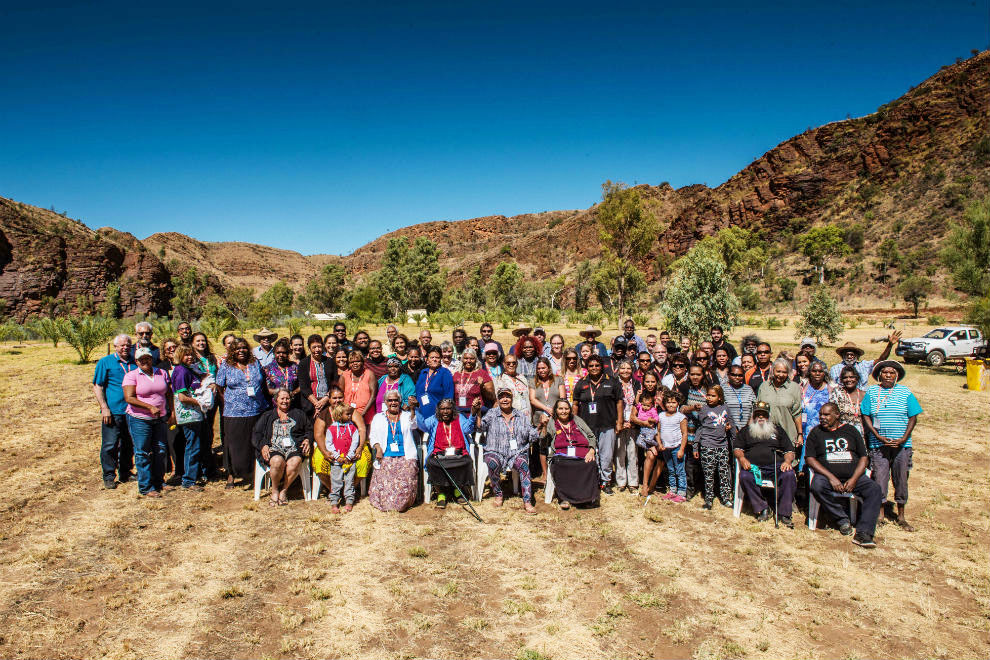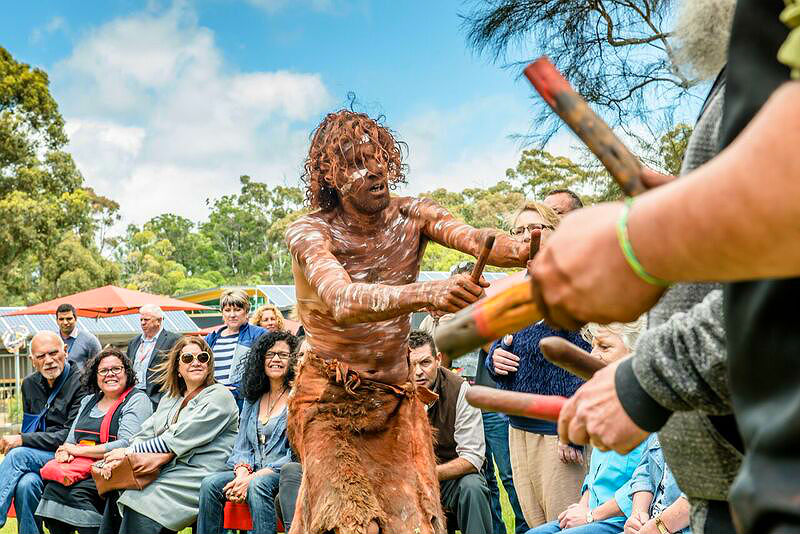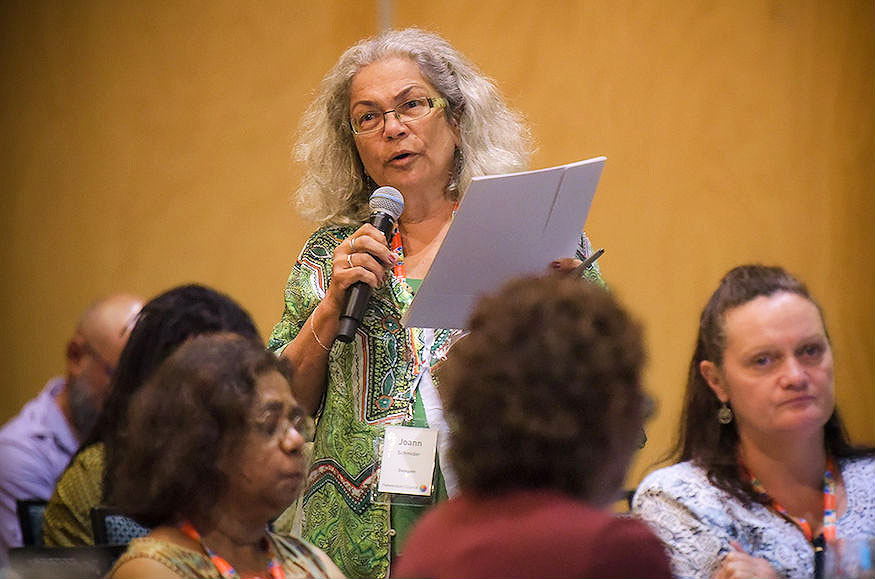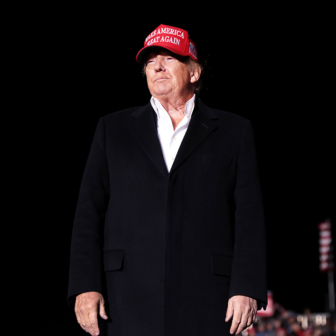Over the past six months, from Hobart to Broome and Adelaide to Thursday Island, Aboriginal and Torres Strait Islander peoples have reclaimed the movement towards constitutional recognition at twelve historic First Nation Regional Dialogues. On 23–26 May, on the fiftieth anniversary of the 1967 constitutional referendum, representatives from each dialogue will meet at Uluru for the first Australian First Nations Constitutional Convention. There, they aim to agree on whether and how Aboriginal and Torres Strait Islander peoples might be “recognised” in the Australian Constitution.
Each dialogue has reflected the priorities of the communities involved, but the calls for substantive, structural reform have been consistent. As Jeremy Clark and Jill Gallagher, the co-convenors of the Melbourne dialogue, have written:
Aboriginal people will not accept a feel-good, symbolic stamp on a fundamentally unfair system. The system needs to be improved. We need to change the way we do business in Aboriginal affairs. Constitutional recognition must mean real reform. It must create a genuine paradigm shift, or Aboriginal people will reject it.
Some proposals have attracted strong support across the dialogues: structural reforms that provide Aboriginal and Torres Strait Islander people with an enhanced role in Australian democracy such as a representative body with a voice to Parliament and treaty negotiations, and a prohibition on racial discrimination. Also emerging have been calls for a truth and justice commission. Most importantly, the dialogues have agreed that the conversation must not stop at Uluru, and that the First Nation peoples must be involved in negotiating the model of recognition.
The dialogues and the convention are being facilitated by the Referendum Council, a body established with bipartisan support by the Turnbull government. The council’s job is to advise the prime minister and the opposition leader on “progress and next steps towards a successful referendum to recognise Aboriginal and Torres Strait Islander peoples in the Constitution.” This is a landmark moment: Aboriginal and Torres Strait Islander peoples are being asked whether they want constitutional reform that purports to “recognise” them, and what shape it should take.
As Patrick Dodson wrote when he was co-chair of the Referendum Council, “Strong support by Aboriginal and Torres Strait Islander peoples for the referendum proposal is absolutely essential. If Aboriginal and Torres Strait Islander peoples do not support the referendum proposal, there is little incentive to proceed to a referendum.”
These dialogues – designed and led by Aboriginal and Torres Strait Islander people themselves – break the pattern of past constitutional deliberations. Aboriginal and Torres Strait Islander peoples weren’t involved in the conventions that drafted the Australian Constitution in the 1890s. In the document itself, they were excluded not only from the national law-making power of the new federal government, but also from the population count that determined the number of seats for each state in the House of Representatives.
The 1967 referendum removed both of those exclusions. But while that vote brought essential reforms, including a national role for the Commonwealth in Aboriginal affairs, it fell far short of achieving substantive equality. Nor did it recognise Aboriginal and Torres Strait Islanders as First Peoples or guarantee them a meaningful role in decisions about Indigenous affairs. The regional dialogue process puts Indigenous people back at the centre of the debate about constitutional change and practical reform.
The process is important for another reason. The concept of “recognition” is far from straightforward, and the failure to acknowledge this fact has led to concerns about the government-funded RECOGNISE campaign. The message of RECOGNISE, which is part of Reconciliation Australia, is expressed in general terms, emphasising explicit recognition in the Constitution and pointing to the possibility of racial discrimination under existing provisions. But it hasn’t been in a position to articulate the form that recognition might take, and what differences it might make to people’s daily lives. In the absence of a clear model, many people in Aboriginal and Torres Strait Islander communities fear that advocating “recognition” will simply build public support for a “minimalist” solution.
A minimalist package would consist of three amendments to the Constitution. The first is the repeal of section 25, which anticipated that states might pass discriminatory laws disqualifying people from voting at state elections on the basis of race, though it penalises any state that does so. Its deletion has multi-party support, as it has had for more than fifty years. It is a “dead letter” in legal and practical terms: no state would now contemplate taking the vote away from Aboriginal people. (In any event, there is a strong argument that to do so would breach the federal Racial Discrimination Act 1975.)

Breaking the pattern: participants in the Ross River Regional Dialogue early last month. Referendum Council
The second minimalist element is a change to the wording of what is known as the “races power” in section 51(xxvi) of the Constitution. This gives federal parliament the power to make laws for the people of any race for which special laws are deemed necessary. When it was introduced in 1901, the power expressly excluded Aboriginal people. The 1967 referendum changed that, for the first time giving federal parliament power to make positive laws for Aboriginal and Torres Strait Islander peoples. A decision by the High Court in 1998 strongly suggested that the power could also authorise laws that are detrimental to Aboriginal and Torres Strait Islander peoples. The minimalist change would not address that possibility; rather, it would remove the word “race” from the Constitution and replace it with a power with respect to “Aboriginal and Torres Strait Islander people.”
The third element is the insertion of a constitutional “statement of acknowledgement.” This would be a statement of facts – for instance, that Aboriginal and Torres Strait Islander peoples were the original occupiers of the continent, that they have a continuing relationship with their land and waters, and that they possess distinctive cultures, languages and heritage.
In the past, there have been calls for such a statement to be included as a preamble to the Constitution – indeed, prime minister John Howard put forward a controversial preamble proposal containing some words of recognition at a 1999 referendum, which was soundly defeated. Today, it is envisioned that such a statement could sit inside a new chapter of the Constitution, or as a preamble to the section giving the Commonwealth power to make laws with respect to Aboriginal and Torres Strait Islander peoples. Such a statement is unlikely to have any significant legal effect, although it might be used to help interpret the scope of that Commonwealth power regarding Aboriginal and Torres Strait Islander peoples.
A minimalist model stands at one end of a spectrum of what recognition might look like. It was emphatically rejected in the Kirribilli Statement, which was presented by forty Aboriginal and Torres Strait Islander leaders to the prime minister and the leader of the opposition on 6 July 2015. That statement read:
[A]ny reform must involve substantive changes to the Australian Constitution. It must lay the foundation for the fair treatment of Aboriginal and Torres Strait Islander peoples into the future.
A minimalist approach, that provides preambular recognition, removes section 25 and moderates the races power, does not go far enough and would not be acceptable to Aboriginal and Torres Strait Islander peoples.
The Kirribilli Statement called on the government to establish a mechanism for negotiations between Aboriginal and Torres Strait Islander people and the government and parliament in relation to more extensive constitutional reforms. It also urged the government to engage with Aboriginal and Torres Strait Islander people over an acceptable referendum process. Soon after, Aboriginal leaders went back to the prime minister to stress the necessity of an engagement process initiated and led by Indigenous people. The government eventually relented, paving the way for the current dialogues.
Further along the spectrum of recognition sit models that provide First Nations peoples with guarantees of political participation, and recognise self-determination and other inherent rights, prohibit racial discrimination and support agreement-making to deal with past wrongs and future empowerment.
The United Nations Declaration on the Rights of Indigenous Peoples, to which Australia is a party, contains two key articles to guide states in their relationships with Indigenous peoples. (Indeed, many Aboriginal and Torres Strait Islander people were involved in the declaration negotiations.) Article 18 reads:
Indigenous peoples have the right to participate in decision-making in matters which would affect their rights, through representatives chosen by themselves in accordance with their own procedures, as well as to maintain and develop their own indigenous decision-making institutions.
Under Article 19, governments must “consult and cooperate in good faith” with Indigenous peoples “to obtain their free, prior and informed consent” about policies and decisions that might affect them.

The welcome ceremony at the First Nations regional dialogue in Hobart. Referendum Council
Countries across the world have recognised First Nations peoples through new structures that promote political participation and self-determination in different ways. In New Zealand, the Treaty of Waitangi, a foundational document acknowledging Māori authority and ownership, influences modern-day legislation, policy and practice and forms the basis for regional agreement-making or settlements; other structural recognition has been achieved through reserved Māori seats in the NZ parliament. In Norway, Sweden and Finland, the Sámi people were granted political representation through the Sámi parliaments, which facilitate consultation between the government and the Sámi on policies and decisions that affect them.
Recognition can take other forms too. Australia, with no constitutional bill of rights, could insert a constitutional prohibition against racial discrimination. This would extend the protections offered by the Racial Discrimination Act 1975 and be binding on federal parliament. Governments could negotiate agreements or treaties with Aboriginal and Torres Strait Islander peoples, recognising their status as First Peoples, providing reparations for past injustices, settling outstanding land issues, transferring decision-making authority, and facilitating economic development in Indigenous communities. No constitutional reform would be required to enter into and legislate for such treaties, although their status could be enhanced by constitutional reform.
The Referendum Council isn’t starting from scratch in considering these issues. It has been directed to build on work undertaken by two inquiries, one conducted by a panel of experts and the other by federal parliamentarians.
The Expert Panel on Constitutional Recognition of Indigenous Australians consulted widely and made five recommendations for constitutional reform in early 2012. While a statement of acknowledgement was among the recommended proposals, the panel stressed the importance of a package that also included substantive legal change: a constitutional prohibition on racial discrimination that would bind all governments across Australia. Its report also considered forms of recognition that would have given greater political participation to Aboriginal and Torres Strait Islander peoples or would have prioritised treaty negotiations. The federal government has never formally responded to the panel’s report and recommendations.
The parliamentary Joint Select Committee on Constitutional Recognition of Aboriginal and Torres Strait Islander Peoples, led by Ken Wyatt MP and Senator Nova Peris, looked at the issue in 2014 and 2015. Its final report contained a number of options, each of which would have restricted the power of the Commonwealth to pass racially discriminatory laws against Aboriginal and Torres Strait Islander people. The report considered the recommendations in the Expert Panel report, and referred to alternative models that had subsequently emerged. One of these was a proposal for a constitutionally enshrined body to advise parliament on proposed laws that affect Aboriginal and Torres Strait Islander peoples; others included measures to promote self-governance, structural reform incorporating a Council of Elders, reserved seats in the Senate, and progressing a treaty through constitutional change. Again, there has been no formal response to this report.
It’s important to remember that well-developed plans for recognition pre-dated these two bodies by more than a decade. For example, the 1988 Barunga Statement, presented to prime minister Bob Hawke by Aboriginal people from Central Australia and the Top End of the Northern Territory, demanded the recognition of Aboriginal rights, including the right to self-determination and self-management, to land and compensation and to basic rights enshrined in international law. The statement called on the Commonwealth to pass laws to create a nationally elected Aboriginal and Islander organisation to oversee Aboriginal and Islander affairs, a national system of land rights, and reforms to the policy and justice system.
The Barunga Statement also called on parliament “to negotiate with us a Treaty recognising our prior ownership, continued occupation and sovereignty and affirming our human rights and freedom.” Advocacy for greater empowerment in the 1980s led to the creation of the Aboriginal and Torres Strait Islander Commission, or ATSIC, in 1990, but the Hawke government backed down on its promises of national land rights and a treaty.
Following the High Court’s watershed 1992 decision in the Mabo case, prime minister Paul Keating delivered the Native Title Act 1993 and a national land fund, and promised a social justice package. In 1995, in response to that third limb of the response to Mabo, an ATSIC report, Recognition, Rights and Reform: A Report to Government on Native Title Social Justice Measures, reported “overwhelming support for the reform of the Constitution especially in relation to recognition of indigenous peoples.” It recommended that government fund a constitutional reform process canvassing the opinion of Indigenous communities, and facilitate local conventions and negotiations at which Aboriginal and Torres Strait Islander people were adequately represented. ATSIC also urged the Commonwealth to investigate reserved seats in parliament. The Keating government didn’t proceed with many of these ideas before it lost government soon after, in 1996, and the proposals were dropped by the incoming Howard government.
Fresh calls for constitutional reform came when the Council for Aboriginal Reconciliation issued its final report, Reconciliation: Australia’s Challenge, in 2000. As part of its roadmap to reconciliation, the council recommended that parliament prepare legislation for a referendum to recognise Aboriginal and Torres Strait Islander peoples as the First Peoples of Australia, including the introduction of a constitutional clause prohibiting adverse racial discrimination. The council also called for governments across Australia, including the Commonwealth, to advance reconciliation through an agreement or treaty process. Almost two years later, the Howard government rejected the treaty process and the push to include a non-discrimination clause in the Constitution.
The 2007 federal election provided new impetus for constitutional recognition. On the eve of that election, John Howard announced that, if he were re-elected, he would move within eighteen months “to formally recognise Indigenous Australians in our Constitution, their history as the first inhabitants of our country, their unique heritage of culture and languages, and their special (though not separate) place within a reconciled, indivisible nation.” His proposal was for a minimalist model of acknowledgement contained in a preamble, though he also used more ambitious language when he described this as the cornerstone of a “new settlement.”
After Labor’s election victory in 2007, prime minister Kevin Rudd made a formal apology on behalf of the government and the parliament to the Stolen Generations and for other past wrongs. But it was not until Julia Gillard’s election victory in 2010 that the Expert Panel on Constitutional Recognition of Indigenous Australians was established to advance the cause of constitutional change.
Today’s calls for constitutional reform to recognise Aboriginal and Torres Strait Islander peoples are made in a changed political and legal environment. The Howard government abolished ATSIC in 2005, leaving Aboriginal and Torres Strait Islander peoples with no national representative body. As Indigenous writer Natalie Cromb has observed, “ATSIC was not without its problems, but to see the governmental power in stripping all representative and legislative rights and powers from Indigenous people in one fell swoop demonstrated just how Indigenous people are at the mercy of the government.”
Today, the National Congress of Australia’s First Peoples strives to be a voice for First Nations Peoples in Australia, but its work has been hampered by lack of adequate funding. The prime minister’s Indigenous Advisory Council operates as an advisory panel rather than as a representative body. Across Australia, state constitutions have been amended to include statements of acknowledgement of Aboriginal and Torres Strait Islander peoples as the First Peoples of Australia. Many of these contain a “no legal effect” clause – a “give with one hand and take away with the other” approach that, for many, undermines even the symbolic significance of the language. The Commonwealth parliament has passed legislation acknowledging Aboriginal and Torres Strait Islander peoples as the first occupiers of Australia, and their continuing relationship to their land and waters, and their continuing cultures, languages and heritage.
There are also signs of more ambitious plans. In Victoria, the state government has been working with Aboriginal communities since 2016 on how a treaty might be negotiated. The South Australian government has appointed an independent treaty commissioner to draft a framework for treaty negotiations. The Northern Territory has established a cabinet sub-committee to promote public discussion of a treaty.
Meanwhile, the dramatic loss of funding and jobs in Indigenous organisations following the federal government’s Indigenous Advancement Strategy, community distress at alarmingly high rates of youth suicide and incarceration, the threatened closure of remote communities and other intensely experienced local issues add to the complex contemporary political environment in which the regional dialogues have taken place.
The First Nation Dialogues took their present shape after a series of meetings with Aboriginal and Torres Strait Islander leaders across the country. A leadership forum followed, and the dialogue methodology and agenda were finalised at a trial dialogue.
In each location, the Referendum Council partnered with a land council or another local host organisation. The host organisation and convenors selected around one hundred participants according to a formula of 60 per cent representation of the land owner base (traditional owner groups, native title bodies and so on), 20 per cent representation for local community organisations, and 20 per cent representation for key individuals. Gender and demographic balance, and representation for the Stolen Generations was also a focus.
Each of the dialogues took place over three days. They were facilitated by two local convenors assisted by five local working group leaders, who led and reported back from breakout groups throughout the dialogue. The carefully planned agenda included opportunities for the Referendum Council to provide delegates with information about the history of constitutional reform in Australia, as well as the different forms that constitutional reform might take. Civics education and foundational legal and political information were provided to assist in the discussion of options for reform, during which delegates had an opportunity to tell the Referendum Council what substantive and meaningful recognition would mean to them and their communities.
Small group discussions provided delegates with an opportunity to understand the different reform options, to consider their possible benefits and disadvantages, and to look at alternative proposals. The delegates were asked what their preferred form of recognition would look like. At the end of each dialogue, the delegates confirmed a statement of record of their discussion, and selected ten people to represent the dialogue at Uluru.
The proposals that attracted strong support – treaty negotiations, an enhanced role and voice for Aboriginal and Torres Strait Islander people in Australia’s democratic system, a prohibition on racial discrimination, a truth and justice commission – all build on decades of consultations and inquiries. They embody the political advocacy of Aboriginal and Torres Strait Islander campaigners stretching back into the nineteenth century. They reflect Australia’s international obligations, and they mirror structural reforms that have been achieved in other countries.
The Uluru Convention promises to be an historic moment in what is a continuing journey for both Aboriginal and Torres Strait Islander peoples and the wider Australian community. •




